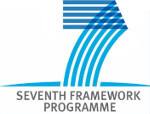Microscopic simulation of xenon-based optical TPCs in the presence of molecular additives
Azevedo, C.D.R. ; González-Díaz, D. ; Biagi, S.F. ; Oliveira, C.A.B. ; Henriques, C.A.O. ; Escada, J. ; Monrabal, F. ; Gómez-Cadenas, J.J. ; Álvarez, V. ; Benlloch-Rodríguez, J.M. ; Borges, F.I.G.M. ; Botas, A. ; Cárcel, S. ; Carrión, J.V. ; Cebrián, S. (Universidad de Zaragoza) ; Conde, C.A.N. ; Díaz, J. ; Diesburg, M. ; Esteve, R. ; Felkai, R. ; Fernandes, L.M.P. ; Ferrario, P. ; Ferreira, A.L. ; Freitas, E.D.C. ; Goldschmidt, A. ; Gutiérrez, R.M. ; Hauptman, J. ; Hernandez, A.I. ; Morata, J.A.H. ; Herrero, V. ; Jones, B.J.P. ; Labarga, L. ; Laing, A. ; Lebrun, P. ; Liubarsky, I. ; Lopez-March, N. ; Losada, M. ; Martín-Albo, J. ; Martínez-Lema, G. ; Martínez, A. ; McDonald, A.D. ; Monteiro, C.M.B. ; Mora, F.J. ; Moutinho, L.M. ; Vidal, J.M. ; Musti, M. ; Nebot-Guinot, M. ; Novella, P. ; Nygren, D. ; Palmeiro, B. ; Para, A. ; Pérez, J. ; Querol, M. ; Renner, J. ; Ripoll, L. ; Rodríguez, J. ; Rogers, L. ; Santos, F.P. ; dos Santos, J.M.F. ; Serra, L. ; Shuman, D. ; Simón, A. ; Sofka, C. ; Sorel, M. ; Stiegler, T. ; Toledo, J.F. ; Torrent, J. ; Tsamalaidze, Z. ; Veloso, J.F.C.A. ; Webb, R. ; White, J.T. ; Yahlali, N.
Resumen: We introduce a simulation framework for the transport of high and low energy electrons in xenon-based optical time projection chambers (OTPCs). The simulation relies on elementary cross sections (electron–atom and electron–molecule) and incorporates, in order to compute the gas scintillation, the reaction/quenching rates (atom–atom and atom–molecule) of the first 41 excited states of xenon and the relevant associated excimers, together with their radiative cascade. The results compare positively with observations made in pure xenon and its mixtures with CO2 and CF4 in a range of pressures from 0.1 to 10 bar. This work sheds some light on the elementary processes responsible for the primary and secondary xenon-scintillation mechanisms in the presence of additives, that are of interest to the OTPC technology.
Idioma: Inglés
DOI: 10.1016/j.nima.2017.08.049
Año: 2018
Publicado en: NUCLEAR INSTRUMENTS & METHODS IN PHYSICS RESEARCH SECTION A-ACCELERATORS SPECTROMETERS DETECTORS AND ASSOCIATED EQUIPMENT 877 (2018), 157-172
ISSN: 0168-9002
Factor impacto JCR: 1.433 (2018)
Categ. JCR: NUCLEAR SCIENCE & TECHNOLOGY rank: 11 / 34 = 0.324 (2018) - Q2 - T1
Categ. JCR: PHYSICS, NUCLEAR rank: 12 / 19 = 0.632 (2018) - Q3 - T2
Categ. JCR: INSTRUMENTS & INSTRUMENTATION rank: 39 / 61 = 0.639 (2018) - Q3 - T2
Categ. JCR: PHYSICS, PARTICLES & FIELDS rank: 23 / 29 = 0.793 (2018) - Q4 - T3
Factor impacto SCIMAGO: 0.686 - Nuclear and High Energy Physics (Q1) - Instrumentation (Q1)
Financiación: info:eu-repo/grantAgreement/EC/FP7/339787/EU/Towards the NEXT generation of bb0nu experimets/NEXT
Financiación: info:eu-repo/grantAgreement/ES/MINECO/FIS2014-53371-C04
Financiación: info:eu-repo/grantAgreement/ES/MINECO/SEV-2014-0398
Tipo y forma: Artículo (PostPrint)
Área (Departamento): Área Física Atóm.Molec.y Nucl. (Dpto. Física Teórica)
 Debe reconocer adecuadamente la autoría, proporcionar un enlace a la licencia e indicar si se han realizado cambios. Puede hacerlo de cualquier manera razonable, pero no de una manera que sugiera que tiene el apoyo del licenciador o lo recibe por el uso que hace. No puede utilizar el material para una finalidad comercial. Si remezcla, transforma o crea a partir del material, no puede difundir el material modificado.
Debe reconocer adecuadamente la autoría, proporcionar un enlace a la licencia e indicar si se han realizado cambios. Puede hacerlo de cualquier manera razonable, pero no de una manera que sugiera que tiene el apoyo del licenciador o lo recibe por el uso que hace. No puede utilizar el material para una finalidad comercial. Si remezcla, transforma o crea a partir del material, no puede difundir el material modificado.
Exportado de SIDERAL (2019-11-22-14:46:47)
Visitas y descargas
Idioma: Inglés
DOI: 10.1016/j.nima.2017.08.049
Año: 2018
Publicado en: NUCLEAR INSTRUMENTS & METHODS IN PHYSICS RESEARCH SECTION A-ACCELERATORS SPECTROMETERS DETECTORS AND ASSOCIATED EQUIPMENT 877 (2018), 157-172
ISSN: 0168-9002
Factor impacto JCR: 1.433 (2018)
Categ. JCR: NUCLEAR SCIENCE & TECHNOLOGY rank: 11 / 34 = 0.324 (2018) - Q2 - T1
Categ. JCR: PHYSICS, NUCLEAR rank: 12 / 19 = 0.632 (2018) - Q3 - T2
Categ. JCR: INSTRUMENTS & INSTRUMENTATION rank: 39 / 61 = 0.639 (2018) - Q3 - T2
Categ. JCR: PHYSICS, PARTICLES & FIELDS rank: 23 / 29 = 0.793 (2018) - Q4 - T3
Factor impacto SCIMAGO: 0.686 - Nuclear and High Energy Physics (Q1) - Instrumentation (Q1)
Financiación: info:eu-repo/grantAgreement/EC/FP7/339787/EU/Towards the NEXT generation of bb0nu experimets/NEXT
Financiación: info:eu-repo/grantAgreement/ES/MINECO/FIS2014-53371-C04
Financiación: info:eu-repo/grantAgreement/ES/MINECO/SEV-2014-0398
Tipo y forma: Artículo (PostPrint)
Área (Departamento): Área Física Atóm.Molec.y Nucl. (Dpto. Física Teórica)
Exportado de SIDERAL (2019-11-22-14:46:47)
Enlace permanente:
Visitas y descargas
Este artículo se encuentra en las siguientes colecciones:
Artículos > Artículos por área > Física Atómica, Molecular y Nuclear
Registro creado el 2019-03-19, última modificación el 2019-11-22
